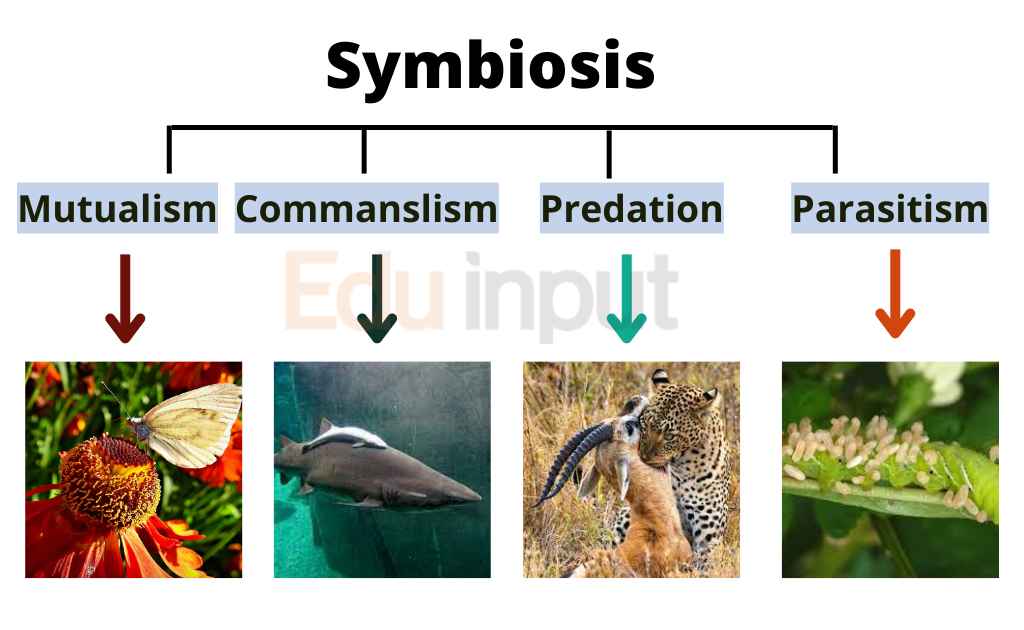Symbiosis- Types and Examples | Mutualism, Commensalism, Predation and Parasitism
The biological interaction between two organisms in which one or both the organisms get benefits is called symbiosis. The organisms that are involved in this interaction are called Symbionts. Symbionts can be both beneficial and harmful.
For Example, Humans And Bacteria Live Together In Our Bodies.
Types Of Symbiosis
There are four types of symbiosis.

Mutualism
Mutualism is an association in which both organisms get the benefit.
Example of Mutualism
Root Nodules: The legume plants, pea, and beans are the hosts of symbionts bacteria. These bacteria inhabit the roots of these plants and form root nodules. The root nodules bacteria fix nitrogen in soil air. They convert this nitrogen into amino acids. These amino acids are used by the host. In return, the host provides bacteria with food protection.
Commensalism
In biology, commensalism is a type of relationship between two individuals of different species where one benefits from the other without harming it.
Example of Commensalism
The remora fish is one of the most fascinating creatures in the ocean. By hitching a ride on a shark’s belly, it can travel to different areas without having to use its energy to swim. The remora benefits from the shark’s movement, while the shark is completely unaffected by the remora’s presence.
Predation
A biological interaction in which one organism kills and eats another for sustenance is called predation. When one organism is hunting and eating another, the first is said to be preying on the second. The victim in this case loses energy, while the predator gains energy.
Example of Predation
Domestic cats have long been known to kill small animals, such as rodents and birds.
Parasitism
Parasitism is a close relationship between species, where one organism gets to benefit from the host, and cause harm to them.
The parasite lives on or inside another organism, the host, and causes it some harm like diseases or death of the host.
Example of Parasitism
The Helminths (worms) live in the intestines of the host and cause infection in them.
Also learn:




Leave a Reply